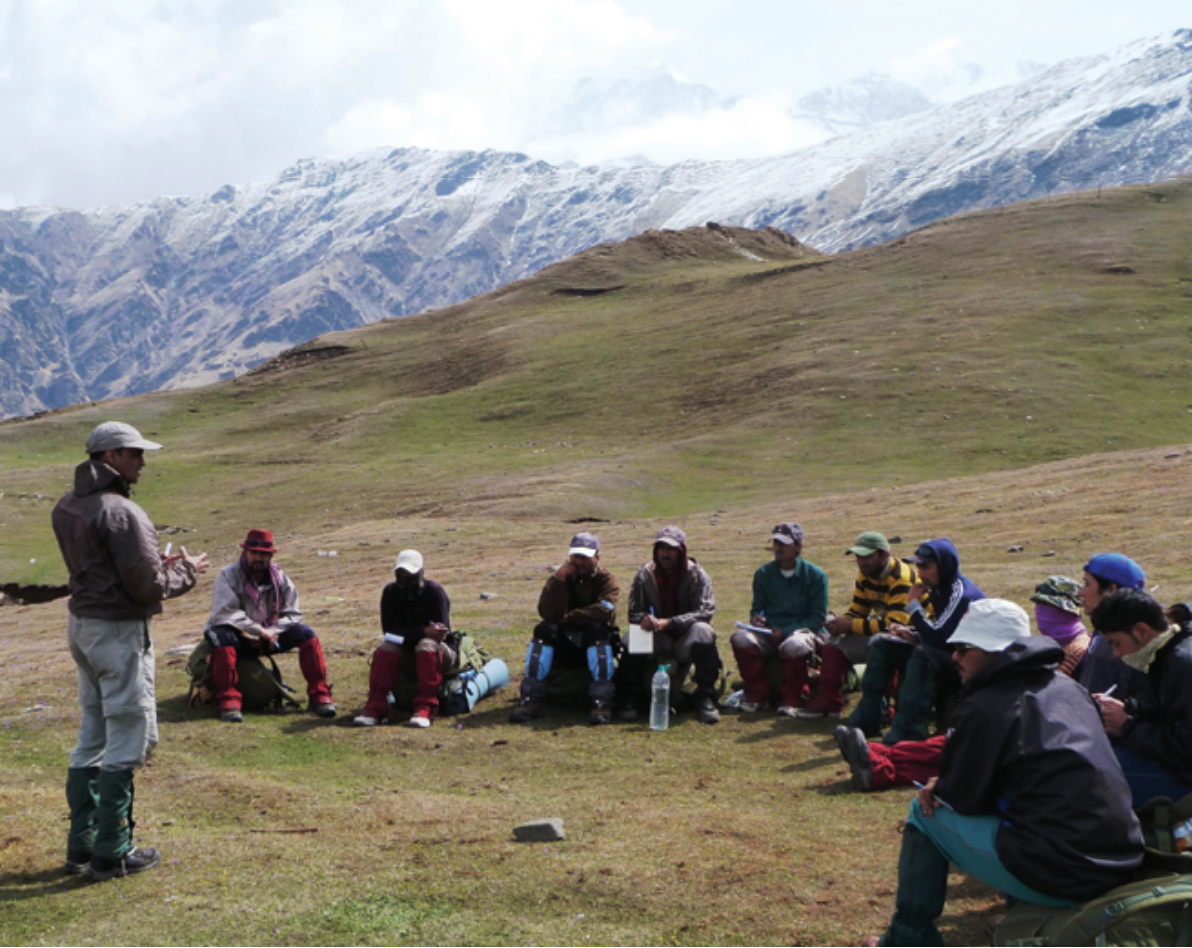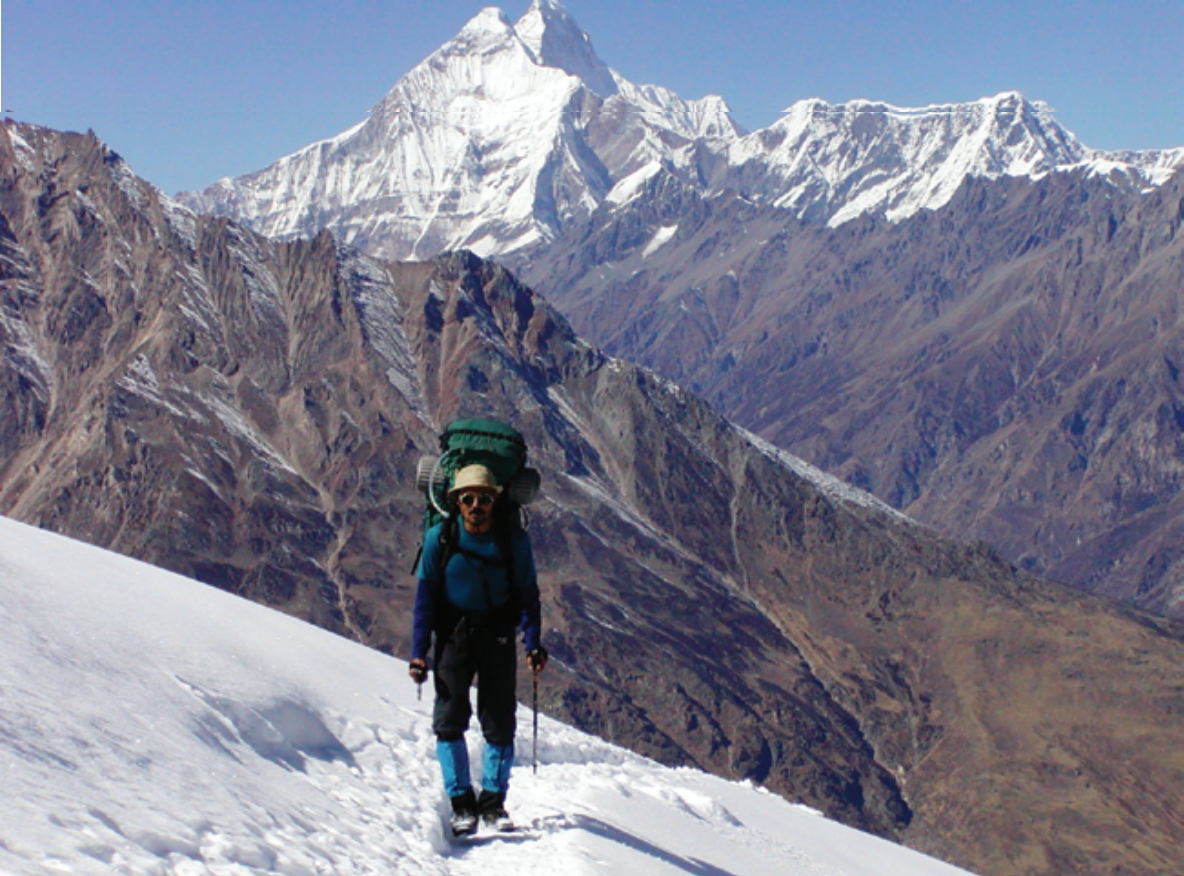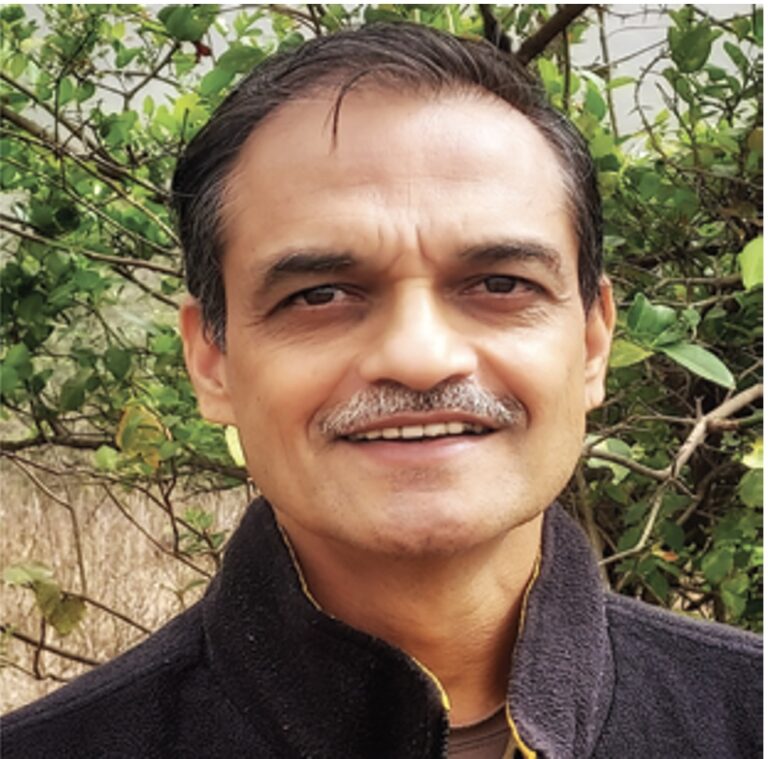“I wonder why adults encourage/force children to take up hobbies only to drop them later.”
A rebel with a cause but without pause is what describes Shantanu Pandit succinctly. An ardent votary of what he eminently believes is “outdoor education”, this hardboiled adventurist strives to popularize activities like hiking, rock climbing, rafting, canoeing, nature walks, and community service. Exposed to rigorous environment-friendly practices, he was able to cultivate the art of having lifelong friendships with many clients and business associates. His blogs are parts of his advocacy efforts.
In a tete-a-tete with A.Radhakrishnan, he talks about a life well lived.
Tell me a little about yourself
I have always been a sort of a rebel. After formal education, why was I expected to stop ‘playing’ and become ‘serious’? Have a ‘career’ and stop pursuing amazing hobbies like sketching, hiking, bird watching, reading and playing?. I wonder why adults encourage/force children to take up hobbies only to drop them as adults. I guess my character-building was incomplete as I continued with my hobbies into adulthood!
What were the activities you pursued as an adult?
The foundation of what I do probably was in the rough-and-tumble games I played as a child which have virtually disappeared from urban settings today. School time activities continue for me till today. During college days, a rock climbing course and a Himalayan camp got me into adventure. Basic mountaineering course and a big mountaineering expedition in 1988 changed my life.
In my mid-twenties, I quit my job to explore the outdoors, and co-founded a Trust that conducted outdoor education programmes for school children, while in tandem being a tour manager on Himalayan hikes for a British company. In 1993, I co-founded an adventure travel company. Writing our company brochures, using my sketches and photographs as illustrations, we explored exciting outbound training programmes for corporates and adventure events for TV channels!
But the pull of outdoor education was too strong for me. Moving away from business in 2000, I undertook the instructor course at National Outdoor Leadership School, U.S.A. (NOLS) and have gradually widened my area of work. Today I also offer consultancy to outdoor organisations, teach outdoor leadership and wilderness first aid, and do voluntary work for enhancing safety in adventure programmes.
What are experiential learning-based programmes?
They are designed for a specific set of objectives, for a specific group and usually in a specific organisational context. It’s an approach, a method to teach topics/subjects, guided by a ‘facilitator’ offering participants maximum chances of learning.
Based on the concept of ‘learning cycle’, having many formats, they can be residence and/or journey based, have short or extended duration, and use reflection as a powerful tool when appropriate to learner-profile.
What is outdoor education?
Outdoor education involves learning in and from the outdoors (the natural environment and adventure activities); teaching outdoor skills, using it as a medium to address personal development objectives, and expeditioning, designed and guided by facilitators with one or more activities like hiking, rock climbing, rafting, canoeing, nature walks, and community service.
Describe being an instructor on outdoor education programmes for school children.
An extremely rewarding experience, it sensitised me to the quality of work needed to make outdoor experiences enjoyable and valuable. Seeing the changes in children even in a one-week programme, I got insights that formed the foundation for what I could do later on. Crucially I learnt the value of constantly learning and enhancing one’s own capability.

What was your experience in adventure tourism – first as a tour manager and then as a co-founder in your own company?
As tour manager with the British hiking company, I saw how enjoyable and environment friendly it was to hike in small groups, get introduced to many regions in the Himalayas and develop long standing relationship with locals (e.g., guides, cooks, muleteers, home-stay owners and hotels).
Being co-founder of the adventure travel company, gave me meticulous environment friendly practices, and lifelong friendships with many clients and business associates.
What did adventure events for TV channels & ‘Work at height operations’ entail?
Events for TV channels had a single purpose: entertainment. E.g., footage of VJs undertaking adventure activities was used as fillers between songs in a feature broadcast on one channel.
‘Work at height’ projects involved people working in non-outdoors industries. My work was to develop a system for hauling material on construction sites and write standard operating procedures (SOPs) for the same. I also wrote SOPs and ‘hazard identification and risk assessment’ (HIRA) for a project that was working on freshly excavated hillsides.
What was this instructor course of National Outdoor Leadership School (NOLS) in U.S.A.?
The one-month course in Wyoming, U.S.A. qualified me as a hiking instructor in 2000. Broadly, two components: outdoor leadership and outdoor skills. We were taught, mentored and evaluated to be ‘ticked off’ to work for NOLS. I taught a one-month ‘outdoor leadership course’, primarily aimed at U.S.A university students. Students earned college credit on a course. I worked two courses per year for more than a decade.
What work do you now do for business corporates?
‘Outbound training programmes’ for objectives related to ‘people skills’ like leadership and effective teamwork and Management games and adventure activities which act as simulations and help address objectives. I design and facilitate programmes customised to objectives stated by an organisation.
I have started undertaking one-on-one coaching assignments for employees of corporates, covering areas of leadership like effective teamwork and delegation.
Why has outdoors and adventure appealed to you?
Being amidst nature made the world come alive for me, in many ways. The stuff that I had read about in books became real through immersive contact with the natural elements. Adventure made me feel intensely alive, involving my whole being at a mental, emotional and physical level. The feeling of sheer comfort I felt in the outdoors, come rain come shine, finally decided it for me – this is where I wanted to be the most.
Your most exciting mountaineering expedition
In 1988, I was a member of an expedition attempting India’s highest and the world’s third highest mountain, Kangchenjunga. The venture was a big learning and life changing experience for me and others. Preparation and actual climbing took more than two years.
I used my sketching and writing skills, was one of the ‘official’ photographers, climbed up to 24,000 ft. and was involved in our public liaison effort throughout. There were a couple of intensely risky episodes that I went through on the mountain. Big mountain, big excitement, big memories!
On your experience in writing
Writing was just an extension of reading for me. I started formally writing when it was needed for our outdoor education programmes. Our adventure company’s clients loved the content in our brochures. Eventually I found myself editing and proof reading documents wherever I got involved. Then, for a lark, I edited a book! It is fun.

On your blogs and its content
My blog has many posts with information and practical tips for hiking and camping, based on my own experiences. I try to create conceptual clarity about things for outdoorsperson to take appropriate decisions. Some posts are about what I went through in some experiences. A few posts have nothing to do with the outdoors but where I have given free rein to my flights of fancy and sense of humour!
A bit on your advocacy efforts
As I had become intensely aware of aspects related to safety of people and our environment, through my own training, especially at NOLS, I knew appropriate practices that addressed it remarkably.
Voluntary projects like our outdoor education project and mountaineering expeditions were possible due to the help received from well-wishers and have had significant impact on all people involved. I myself have continually changed the way I function. So it is natural that I am motivated to extend the benefits of outdoors to others and contribute to the conservation of our environment.
As my own experience grew, I learnt a lot about ‘documentation’ for organisations. So when some of us got together to work along with government authorities trying to bring in a Government Resolution (GR) for safety in adventure programmes, I pitched in by writing and editing a lot of content that we generated for our organisation ‘Maha Adventure Council’ (MAC). I led a team writing a 600+ page document based on the concept of ‘safety management system’ with detailed safety guidelines for adventure activities for adventure programmes.
Though a journey of more than eight years, we were successful in considerably influencing the content of the GR and our safety guidelines were accepted by the authorities. Our work has been found to be very much at par with similar developments in other countries.
Advice to new entrants to adventure sports
There is a difference between ‘adventure’ and ‘conducted adventure’. ‘Adventure sports’ probably refer to the latter where it is the organiser/leader/instructor who is primarily responsible for managing risk (though there is also a clearly defined responsibility of the participant).
‘Adventure’ is a long journey of skill and competence building, spanning years of learning from one’s experiences and seniors. It is hard work requiring, inter alia, seeking experience, consistency, perseverance, risk taking and being happy about it all!
New entrants therefore have to be clear about which category they are getting into.
Communication
Tel. +91 9820285878
Blogsite: www.outdoorpandit.com
Website: www.ekoindia.com


